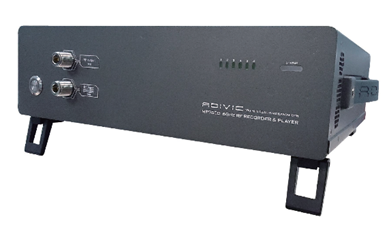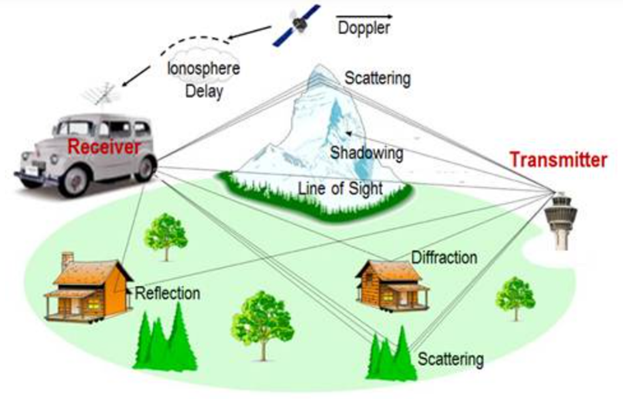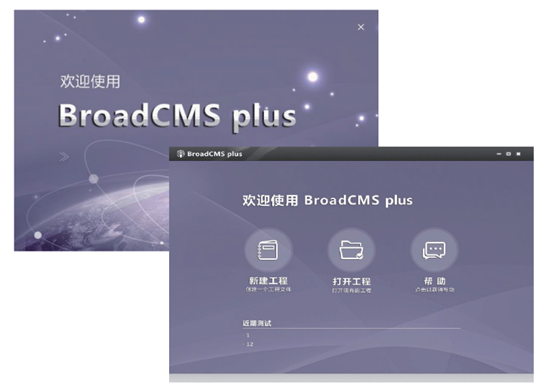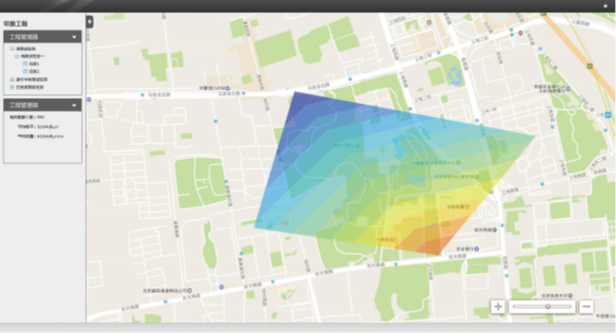1. Overview
RF (Radio Frequency) record and playback equipment is a specialized testing tool widely used across multiple fields including wireless communications, radar systems, electronic warfare (EW), spectrum monitoring, scientific research, and education. Its application background is extensive and diverse, holding significant importance for evaluating system performance, troubleshooting faults, and optimizing parameters.
RF record and playback equipment can capture RF signals in real-time and save them for subsequent analysis. This capability enables researchers, engineers, and technicians to precisely reproduce and analyze past RF events, thereby gaining a deep understanding of system performance, fault causes, or signal characteristics. For instance, when failures occur in wireless communications, radar systems, or other RF equipment, RF record and playback equipment provides critical data support. By replaying and analyzing the recorded RF signals, engineers can quickly pinpoint the problem and perform accurate fault diagnosis, significantly reducing troubleshooting time and improving system maintenance efficiency.
With the continuous development of wireless communication technologies, spectrum resources are becoming increasingly scarce. To utilize spectrum resources rationally, spectrum monitoring and management are essential. RF record and playback equipment can record spectrum usage, including signal frequency, bandwidth, power, and other information. Analysis of this information helps understand spectrum occupancy, providing a basis for spectrum management and planning.
In specific application scenarios, such as military exercises or electronic warfare training, simulating complex electromagnetic environments is necessary. RF record and playback equipment can record RF signals from real-world environments and replay them in laboratories or simulated settings to emulate actual electromagnetic conditions. This is crucial for evaluating system performance in complex electromagnetic environments and formulating countermeasures.
In summary, RF record and playback equipment has a broad application background across numerous fields, and its importance is self-evident. As technology continues to advance, the performance and functionality of RF record and playback equipment will continue to improve, leading to deeper and wider applications in various domains.
2. Industry Pain Points
The current market for RF record and playback equipment is diverse. While it meets the needs of some users in different application scenarios, certain devices still fall short of the required standards for more demanding applications.
2.1 Insufficient Bandwidth
In some scenarios, the bandwidth requirements for recording and playing back RF electromagnetic signals are high. Some RF record and playback systems offer relatively low bandwidth, potentially failing to capture the complete current electromagnetic environment and preserve finer details and characteristics. This inability prevents accurate signal state reconstruction during playback and analysis, limiting the value of the test results.
Moreover, devices with relatively low bandwidth also have slower RF signal capture and storage speeds, imposing limitations on applications requiring real-time monitoring and analysis of high-frequency, high-speed signals.
When processing complex RF signals, such as wideband or modulated signals, insufficient bandwidth may fail to capture enough signal information to support subsequent signal analysis and processing.
Therefore, high-bandwidth RF record and playback systems possess stronger capabilities for data acquisition, storage, processing, and analysis, offering the advantage of providing users with more accurate and reliable test results.
2.2 Insufficient Integration
Due to the complexity and diversity of RF signals, most RF record and playback systems currently available on the market consist of multiple instruments working together. This typically includes RF signal acquisition devices, storage devices, processing devices, and playback devices. These devices perform different functions and achieve complete RF signal recording and accurate playback through coordinated operation.
Precise synchronization and coordination between these devices are essential to ensure the integrity and accuracy of the RF signals. Consequently, in practical applications, while such RF record and playback systems can achieve complete acquisition of the RF electromagnetic environment, they often place relatively high demands on technicians. More specialized personnel are required for configuration and debugging to ensure the system operates normally and data accuracy is maintained.
On the other hand, non-integrated RF record and playback systems often involve numerous devices, resulting in a larger overall volume and weight. This makes them difficult to easily transport to various field environments for use. Additionally, they usually require complex cable connections and cumbersome configuration steps, making the process more tedious.
3. Broadband RF Record and Playback System MP7600 Plus
3.1 Product Introduction
3.1.1 Overview
The Broadband RF Record and Playback System MP7600 Plus is a professional RF record and playback system. It is an ideal tool for RF engineers conducting field signal testing and acquisition. As a single unit, it features real-time RF signal analysis, recording, and playback functions. It offers a maximum real-time RF signal analysis, recording, and playback bandwidth of 100 MHz and supports adjustable bandwidth from 2 MHz to 100 MHz. Equipped with spectrum analysis and power measurement capabilities, it meets diverse application needs. Custom software supports timer settings, automatic switching/starting/stopping of recording for different frequency bands within the operating range, and real-time output during signal analysis and recording. It supports loop playback during signal replay.
In the broadcasting and television field, MP7600 Plus comprehensively supports various application domains, from analog to digital, including audio broadcast signals (MW/SW and FM), terrestrial digital TV signals, to wideband satellite modulated signals. MP7600 Plus fully supports standards such as FM/RDS/TMC, HD Radio, DAB, DVB-T/T2, DVB-S/S2, CMMB, ISDB-T, ATSC-MH, T-DMB, DVB-C/C2, DTMB, NTSC/PAL/SECAM, and DTH. Beyond broadcasting and TV standards, it also supports signal acquisition and playback for GPS, CNSS (Beidou), GLONASS, and GALILEO. During single-unit playback output, the center frequency and output power can be customized. The output signal noise floor is less than -160 dBm/Hz, enabling interference environment simulation.
3.1.2 Features and Capabilities
MP7600 Plus is the industry's first device capable of supporting 100 MHz RF real-time recording bandwidth in a single unit. It features an ultra-wide frequency range (up to 6 GHz) and recording bandwidth (up to 100 MHz). It also provides a solution for synchronously cascading up to 6 units to build an RF synchronous recording system. Besides meeting ETC testing applications, MP7600 Plus can satisfy more new application testing requirements, such as wideband satellite signal recording, Wi-Fi signal recording, and simultaneous multi-channel signal recording.

- Recording bandwidth supports arbitrary settings from 2M to 100MH
- Frequency range covers 300KHz to 6.0GHz
- IQ data rate of 500MBps
- 250MS/s sampling rate
- 16-bit ADC precision
- 1PPS, IRIG-B Support (optional)
- Supports maximum hold, minimum hold, and average processing display
- More than 20 Marker functions to meet various marking test needs
- Spectrum template trigger (optional)
- Data format compatible with MATLAB
- Provides IQ data processing tool software
- Provides Syncbox to achieve synchronous recording of RF signals by up to 6 devices (optional)
- 4×2.5-inch internal hard disk slots (standard 4×1TB, expandable to 4×4T or 4×8T)

3.2 Application Description
The core function of the Broadband RF Record and Playback System MP7600 Plus is to capture actual RF signals from real-world scenarios and faithfully reproduce these signals in the laboratory for RF playback. It addresses the critical pain point that standard signal sources, including noise simulators, cannot realistically reproduce actual signals. Real signals are complex and variable, influenced by factors such as location, weather, interfering signals, terrain, and buildings.

The high fidelity, real-signal reproduction, and other functional characteristics of the Broadband RF Record and Playback System enable the following typical applications and benefits:
1)Establishing rich and real field test cases for medium-long wave, shortwave, and microwave receivers, ensuring the reliability of receivers in practical applications.
Due to the complex and diverse practical application scenarios of receivers, various situations such as signal fading, Doppler frequency shift, multipath interference, and ionospheric delay may occur in the field. Standard signal sources and common scenario noise simulators cannot well simulate the field environment, making it impossible to discover many product problems that only appear during field use. The real on-site electromagnetic environment recording and playback of the broadband RF recording and playback system can provide rich and real field test cases for the development and testing of medium-long wave, shortwave, and microwave receivers. The more real and rich this test case library is, the more product problems can be discovered during product development and testing, ensuring the high reliability of receivers in practical applications.
2)Testing the coverage of medium-long wave, shortwave, and microwave transmitters, recording abnormal field data, and ensuring the effective coverage of transmitted signals.
The coverage index of medium-long wave, shortwave, and microwave transmitters, as one of the core indicators concerned by transmitting stations and relevant monitoring units, plays a positive guiding role in the regular maintenance of transmitters and the construction of new stations.

The supporting software BroadCMS in the broadband RF recording and playback system MP7600 Plus fully supports comprehensive field strength coverage road testing for AM, FM, CDR, PAL-D/K, and DTMB signals. It has perfect transmitter coverage testing functions, supports signal level parameter display and strength statistics, and can automatically calculate the field strength value in dBμV/m based on the input antenna factor and cable loss. It supports GPS positioning and map marking functions, as well as two-dimensional coverage effect evaluation. BroadCMS can be used in conjunction with the RF recorder MP7600, professional receiving antennas, and precision transmission cables, and supports secondary integration with mainstream radio and television testers in the industry.

3)Recording the field electromagnetic environment of medium-long wave, shortwave, and microwave.
Using the MP7600 Plus when monitoring the MW, SW, and Microwave field electromagnetic environment and coverage quality allows for accurate capture and preservation of signal conditions in areas with coverage anomalies. Especially during critical event security periods, it preserves abnormal or illegal signals, providing strong support for analysis and tracing of such signals.
Beyond the above typical applications, leveraging the excellent RF performance and strong functional scalability of the MP7600 Plus, this system will also develop more application scenarios in future engineering projects.